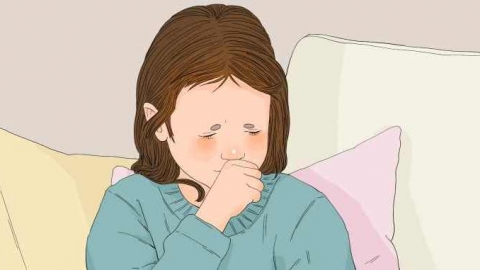What causes a child to have a high fever and foam at the mouth, and what should be done?
Generally speaking, a high fever refers to a high temperature. Foaming at the mouth in children with high fever may be related to underdeveloped thermoregulatory centers, failure to dissipate heat promptly after strenuous exercise, upper respiratory tract infections, febrile convulsions in children, epilepsy, and other factors. It is recommended to seek timely medical attention and follow a doctor's guidance for treatments such as general care or medication. A detailed explanation is as follows:

1. Underdeveloped Thermoregulatory Center
Children's thermoregulatory centers are not fully developed. When the ambient temperature is excessively high, they may be unable to regulate body temperature effectively, leading to high fever. During high fever, children may experience increased salivation; if they cannot swallow the saliva promptly, foaming at the mouth may occur. It is recommended to maintain a suitable indoor temperature and avoid prolonged exposure to high-temperature environments.
2. Failure to Dissipate Heat Promptly After Strenuous Exercise
After strenuous activity, children generate a large amount of heat. If heat dissipation is delayed, it may lead to high fever. At the same time, during intense exercise, breathing deepens and quickens, increasing saliva production. If not swallowed promptly, this may also cause foaming at the mouth. It is recommended to plan children's exercise duration and intensity appropriately.
3. Upper Respiratory Tract Infection
Upper respiratory tract infections are usually caused by viral or bacterial infections. These infections elevate a child's body temperature and may be accompanied by symptoms such as coughing and phlegm production. During coughing, oral secretions may increase, and if not expelled promptly, foaming at the mouth can occur. Symptoms such as nasal congestion, runny nose, and sore throat are commonly present. Treatment typically follows medical advice using medications like compound paracetamol and amantadine tablets, azithromycin tablets, and isatis root granules.
4. Febrile Convulsions in Children
Febrile seizures in children are typically caused by infections, high fever, genetic factors, developmental issues, and environmental factors. Infections can cause dysfunction of the central nervous system, leading to elevated body temperature. Chills, headache, and cough may also occur. Treatment may involve medications such as mannitol injection, ribavirin granules, and ibuprofen granules, as advised by a physician.
5. Epilepsy
Epilepsy is commonly caused by abnormal discharges of neurons in the brain. During an epileptic seizure, the contraction of muscles throughout the body generates heat, causing high fever. With high fever, oral secretions increase, resulting in foaming at the mouth. This is generally accompanied by loss of consciousness and urinary or fecal incontinence. Medications such as lamotrigine tablets, sodium valproate sustained-release tablets, and carbamazepine capsules may be used under medical guidance.
During treatment and recovery, it is recommended to maintain a light diet, drink an appropriate amount of warm water, and avoid consuming oily or spicy foods, which can help promote physical recovery.




